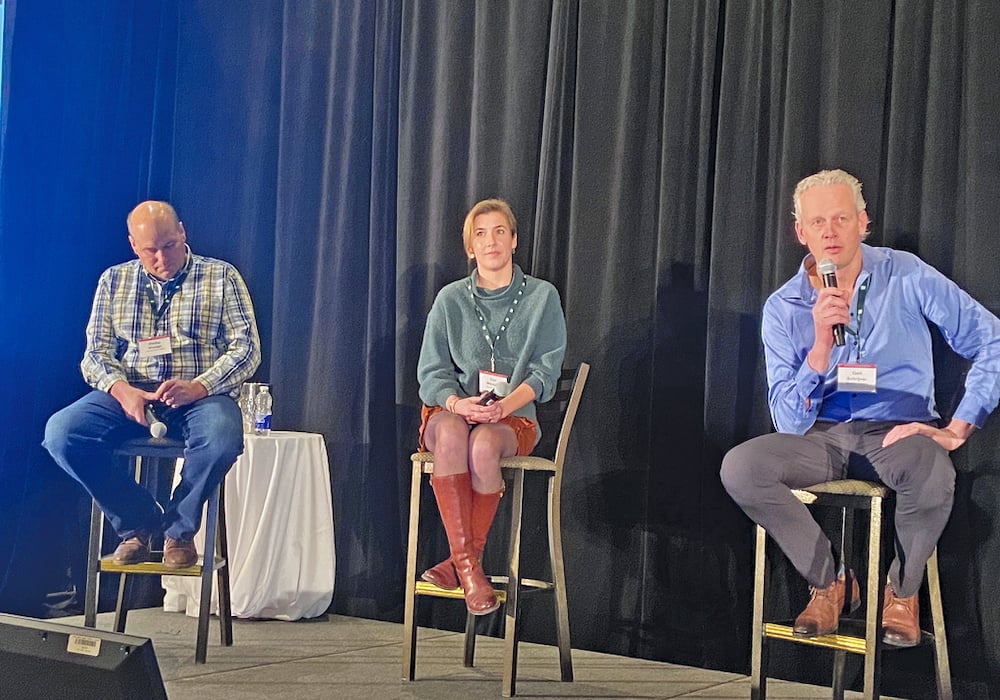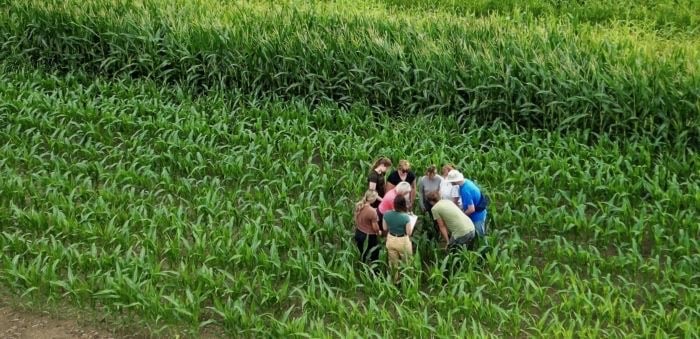Three dairies, three approaches: Land and people are the priorities, say dairy farmers

Dairy farmers who want to expand must first get land and people in place.
Read Also

Master of Sustainable Agriculture launched by U of G
A new, interdisciplinary Master of Sustainable Agriculture (MSAg) is being offered by the University of Guelph, starting in the summer…
That was a common theme from a cross-country panel of leading dairy farmers at the recent Progressive Dairy Operators triennial conference in Toronto.
Gert Schrijver farms in Stettler, Alta., milking about 300 cows on 1,700 acres. He plans to build a new milking facility in the next five years and has purchased a quarter section each year for the past five years to make sure he’ll have the acreage needed for feed production and manure application.
After three recent drought years, he has a year of forage ahead in his bunk silos.
In Ontario, Cox Wensink milks 500 cows on two different farms with 10 robotic milking systems.
She says the farm need to find more land, especially before making its “next big leap”, which won’t be coming for a few years. That’s a challenge in Ontario’s Oxford County, where the land sells for upwards of $30,000 per acre.
“That’s something we strive to get ourselves into the position to do,” she said. Maintaining a good relationship with bankers and keeping them regularly updated helps when new capital is needed.
Wensink aims to have the farm running smoothly so she can attend her young children’s sports and school activities.
“We’ve come out of five very busy years on the farm,” she says.
In Nova Scotia, Phillip Vroegh of Sunny Point Farms recently ranked second in Canada for the past two years in Lactanet’s top Herd Management Score (Schrijver’s Marsfield Holsteins was the top farm in Alberta in 2023).
Vroegh milks 340 cows in buildings that he says are getting full, and will need to look at new facilities in the future.
He farms with his wife Lori and son Cole. His father, Eef, started the farm in 1959 in East Lowell, Nova Scotia.
Land price isn’t their biggest barrier to expansion. Other factors such as the longevity of milk processors in the region, which haven’t seen much in upgrades in 50 years, are bigger challenges.
Vroegh has invested in feed facilities because local grain elevators aren’t as available as they are in Ontario. A $300,000 investment in feed tanks and a batch mixing facility paid back in less than five years, providing a better ability to buy and store feed when it’s less expensive and reducing shrink, the amount of feed lost in transit, settling and spoilage.
Managing labour
The three farms take different approaches to maintain and train labour, but it is a significant amount of work for all.
“The main thing I do is people management on my farm,” says Schrijver. “It takes a massive amount of time and expertise around employee management.”
He employs four full time and three part-time workers.
Schrijver has spent a lot of time away from his farm in recent years as a board member for Alberta Milk and the Dairy Farmers of Canada. He now serves on the Lactanet board of directors.
His farm has thrived due to good employees and his family.
“A well-paid workforce makes the farm more profitable,” he says.
Wensink has robots to help, but about five years ago she engaged in the temporary foreign worker program and now most of the workers on her farm are from Guatemala.
“It’s been a really positive thing on our farm.”
Wensink’s Hoenhorst Farm has also hired a human resource advisory firm to help fill out documentation and advise on how to deal with human resource issues, which Wensink admits isn’t her strongest trait.
“My background is not HR and it’s not what I’m good at.”
Wensink’s training is in engineering.
She also says it’s important to learn the language of foreign workers. Communication can happen via Google Translate, but when the issue is serious, there isn’t room for misinterpretation.
Vroegh has taken several approaches to build his team. He added two temporary foreign workers last year and was challenged by the amount of training needed. His staff receive medical and dental benefits and an RRSP matching pension program.
“Everybody gets a side of beef. We try to have a team approach,” he says, adding that the farm tries to be seen as a good community member and therefore a good place to work.
Managing by the metrics
Managing feed costs has been important due to higher grain prices. Reliance on metrics and benchmarking has enabled these herds to manage the return on feed costs.
“Return over feed costs are pretty integral,” says Vroegh. His farm calculates the cost weekly with a spreadsheet. It uses Feed Watch software linked with DairyComp herd management software.
“Feed cost is big out our way,” he says, noting the farm pays $100 more per tonne for corn than in Ontario.
Wensink works with her accounting firm, which runs a benchmarking program for dairy farms in her area.
She is working to improve monitoring of return on feed. She looks at the cost of purchased feed per kilogram of butterfat. She meets weekly with the nutritionist to keep an eye on the cost of rations, which is kept to a minimum with few additives. She doesn’t aim for the highest milk production or butterfat.
“Like everybody, our feed costs have risen tremendously and we maybe haven’t taken an in-depth look as I suppose we should.”
In Alberta, Schrijver focuses on return on feed cost per cow. He is part of a benchmarking program with his feed company, which includes 80 farms.
“Our goal is to be in the top five,”’ he says.
Sixty per cent of his dry matter intake comes from forages, a big driver in reducing feed costs.
Schrijver has also put emphasis on herd longevity, with 60 per cent of his herd in third lactation or older.
A major U.S. study involving Zoetis and Compeer, an accounting firm, showed that the management trait with the highest correlation to farm income is net herd turnover costs. He says herd longevity has a significant impact on his farm’s bottom line.
Source: Farmtario.com

